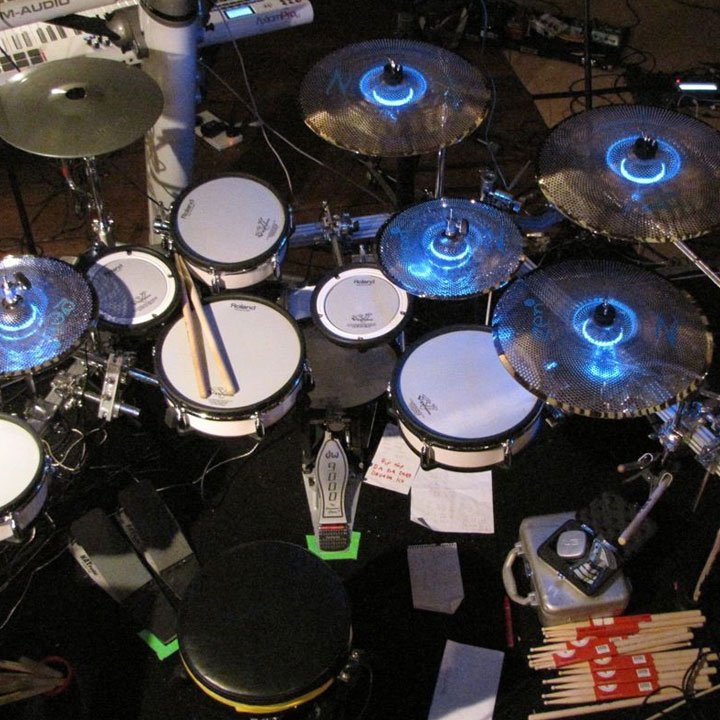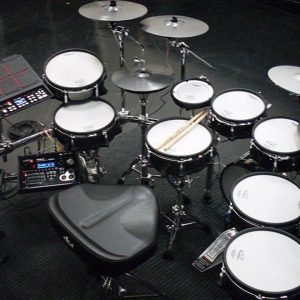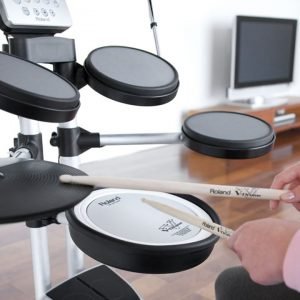It’s the big day. You’re down at the Drum Palace, a wad of crisp bills burning a hole in your wallet, ready to blow the lot on a gleaming box-fresh acoustic kit. We hate to interrupt the most exciting day of your life, but back up there a minute. Before you make the knee-jerk choice of shells and skins, allow us to gently open your mind to the world of electronic drums.
Maybe you’ve never considered an electric drumset before. Perhaps you always worried it would be too complicated and costly. Maybe you’re worried it’ll ruin your swing, kill your tone and one day enslave the human race. Not true. Whether you’re a first-time-buyer or an improving drummer after an investment kit, it’s time to scrub the stereotypes and learn what electronics could do for your playing.
Contributed by Roland UK
Recommended Article: Beginners Guide to Buying a Drum Kit
More Versatility and Selection of Sounds (Drumkits)
So you’ve found an acoustic drumkit that nails the ‘thwack’ you’ve heard on Black Dog. That’s great – if you’re happy to be forever tied to that one tone. Electronic kits aren’t ‘better’, as such, but a good one will be more versatile. They offer an onboard library of simulated drum tones that can nail the clatter of vintage Moon or the rifle-crack of modern Jordison. That flexibility is not only great for beginners chasing down their vibe and first band. It also gives more advanced drummers a bag of useful tones for sessions and live work.
Faithful Feel, Response and Feedback from Playing Electric Drums
Obviously, one of life’s great joys is leathering an acoustic drumkit. What you might not realise, until you take the blindfold test, is that the best modern electronic drums are just as satisfying. Their ultra-sensitive multi-trigger pads and cymbals detect and respond faithfully to every rimshot and ghost note. This natural feel helps beginners get their rudiments down faster. It also lets improving drummers dive into more expressive and involved techniques.
Volume Control for Practise Time
Even without amplification, acoustic drums are louder than war, which is thrilling, but also kinda impractical. Decent electronic drum kits have a headphone jack. They can be further piped-down by drum sound isolation boards and noise-reducing pedals. This makes them an ideal choice for beginners practising in shared accommodation. On the flipside, more advanced drummers who are playing out should be aware that to amplify electronic drums, you’ll need a monitor.
Competitive Price for Every Pocket
A no-brand acoustic kit might still the cheapest way for a newbie to get onto the drum ladder. But don’t expect anything more than a shonky stopgap. At the high end, electronic kits can be investments. But there are V-Drums models at every price point. If you’re serious about drumming for life, digital isn’t beyond anyone.
Learning Through Drum Tutorial Features
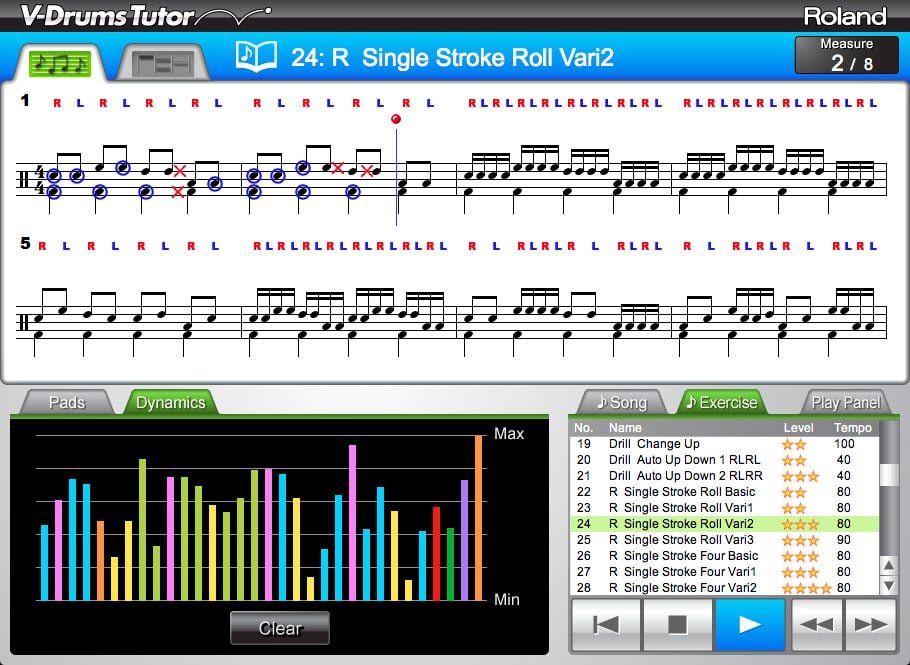
Unless you’ve got Benny Greb on speed-dial or a tutorial book open on your lap, acoustic kits don’t give a whole lot back. Whatever your current skill level, many electronic kits include onboard programs to boost it. These include coach functions that improve your accuracy, timing and endurance, to instant record/playback features that let you self-assess your own drum passages after playing them. Ambitious players should also seek out an electronic kit with USB/MIDI ports. These let them hook up to drum tutorial software and free web-based chop-building apps like Friend Jam and Friends Jam Kids.
Adding Your Favourite Tracks for Solo Jamming
Whether you’re a beginner, intermediate, advanced or Thomas Lang, playing alongside fellow musicians is one of the best ways to improve. Trouble is, if you’ve got an acoustic drumkit – and no band – it’s easy to find yourself paradiddling aimlessly into the void. You’re never alone with an electronic kit though. Good ones let you connect CD/MP3 players, play back your favourite tracks, and invite the Foo Fighters into your front room for a bash through Monkey Wrench.
Quick and Easy to Record
Of course, it’s possible to get killer acoustic drum sounds down on record – if you’ve got Butch Vig on hand to sort out the microphone placement and post-production. From novices to studio anoraks, electronic drum kits make it cheap and simple. Higher-spec models include USB/MIDI ports that allow you to move audio files between computer and kit. Or, run straight to the desk without fear of a spaghetti junction. No mics, no live rooms, no expensive producers!
Portable & Flexible
If you’ve got an acoustic kit, you’re tied to its location unless you’re prepared to laboriously break it down for transport. Electronic kits go up and down much faster, can weigh as little as 12.5kg (Roland portable drumkit, comes with its own bag), and are really flexible too. Many let you tailor cymbal heights, head tension, etc. to your posture, and add extra pads and cymbals as you choose. And if you really don’t want to leave the old-school behind, don’t forget the possibility of building a hybrid kit – an acoustic drum kit bolstered with a sound module and electronic pads (read our post on How To Use Hybrid Drums To Give Yourself A Competitive Edge).
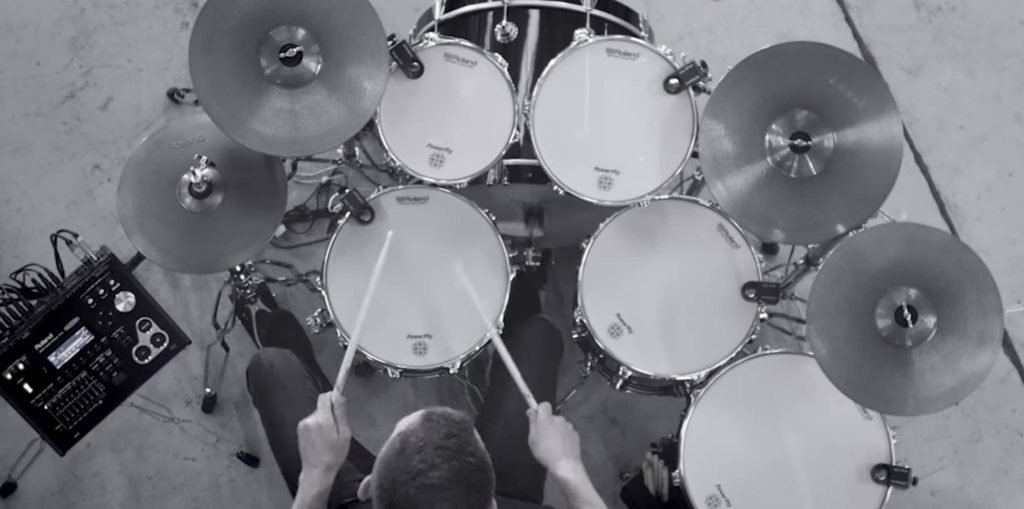
Related Articles
BEYOND THE BEGINNER – HOW TO IMPROVE YOUR DRUMMING
A BEGINNER’S GUIDE TO LEARNING ELECTRONIC DRUMS
IT’S NEVER TOO LATE TO LEARN THE DRUMS
ELECTRONIC DRUMS Q&A

